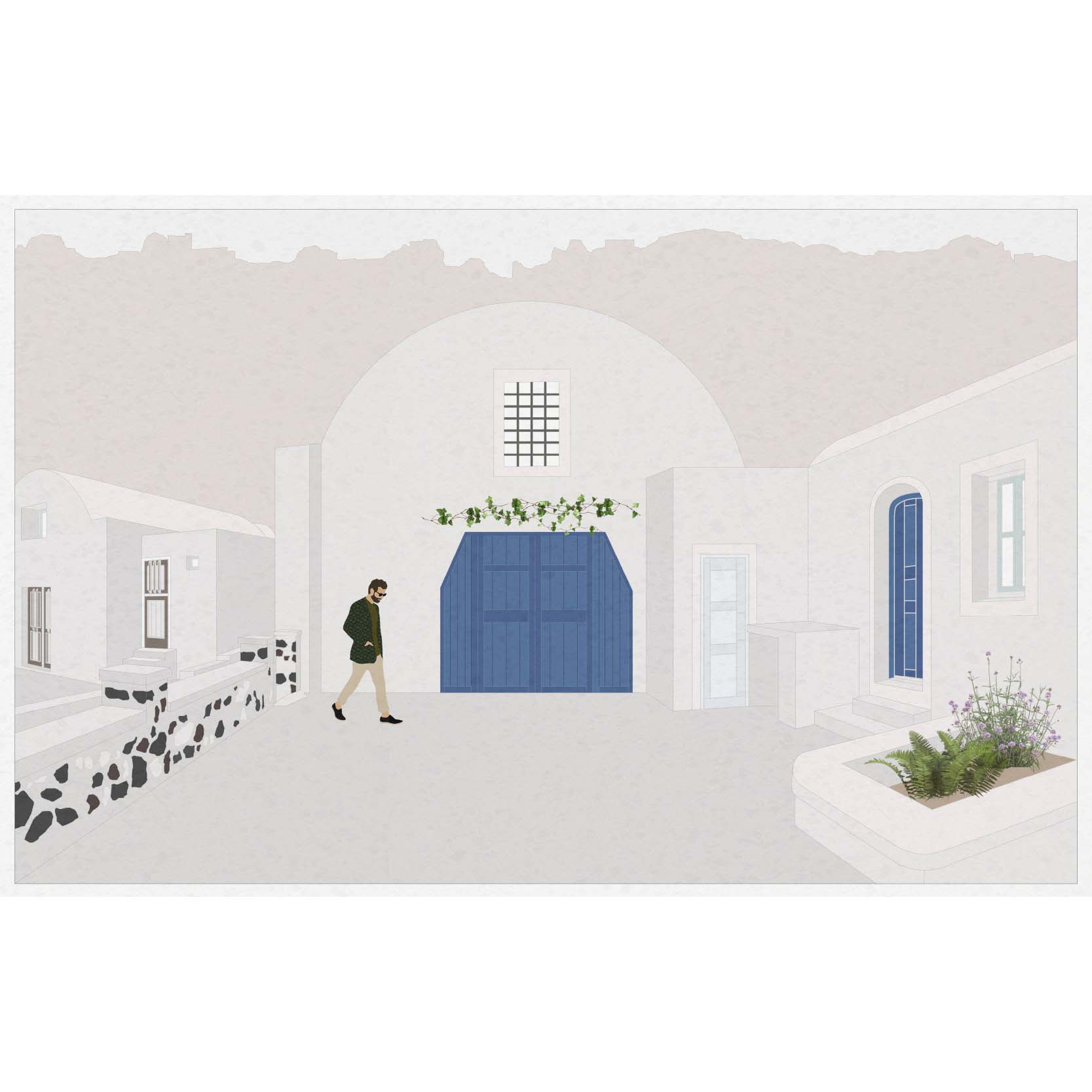

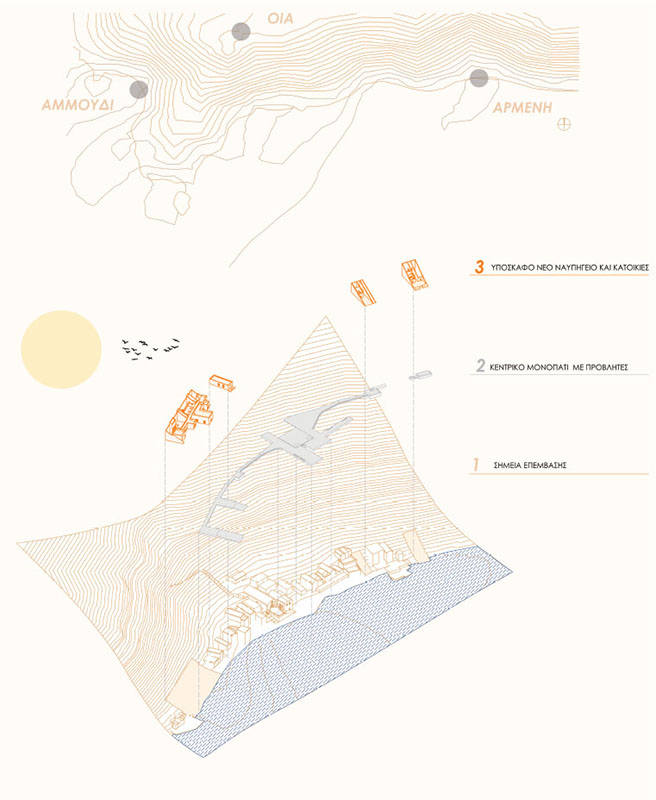

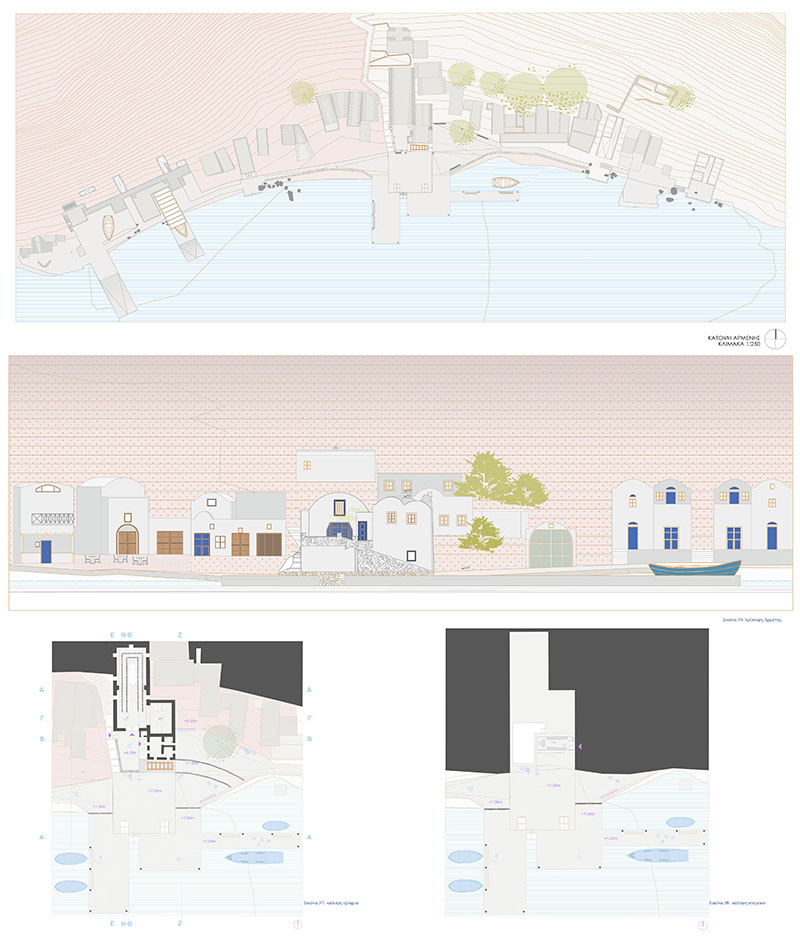

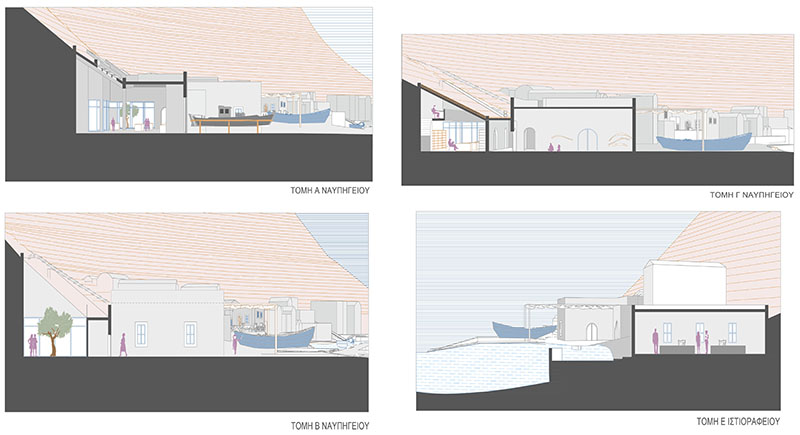

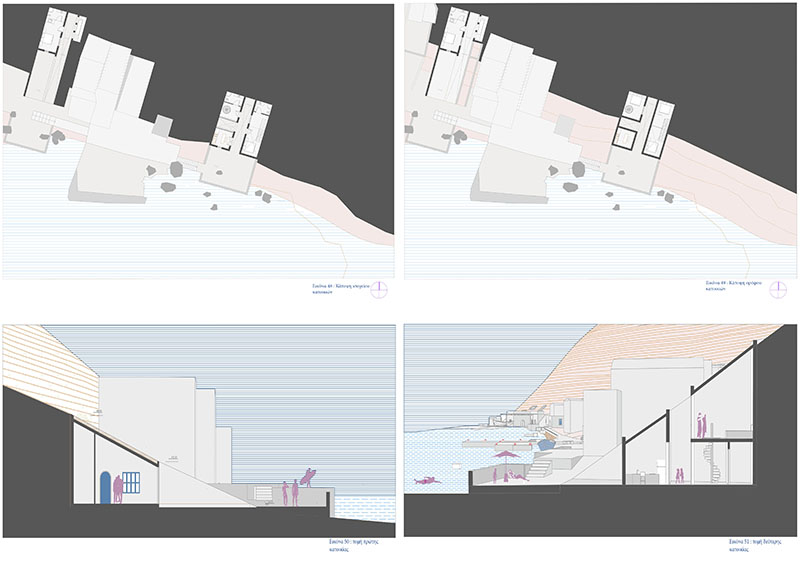

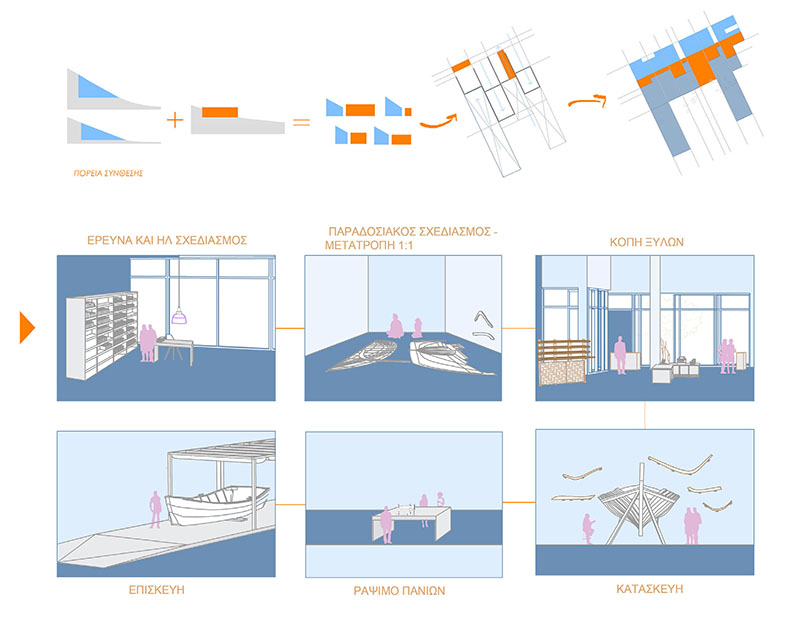

It is a fact that in the last few decades, the woodworking art has been experiencing an intense decline. The specific Diploma Thesis focuses on Armeni harbor in Santorini, and the creation of a woodworking workshop, aiming its revival and regeneration. The synthetical idea of the proposal was developed after a visit to Santorini. Initially, the connection of Oia settlement with this specific art and craftmanship, was acknowledged. In the past, Oia was a crucial captain village of Santorini, presenting a strong maritime tradition. Nowadays, the Maritime Museum, which attracts visitors and presents the naval history of the island, is also very active in the region. During the visit to the island, the wish of the islanders to emerge the old shipyard of Armeni was expressed. The former operated until 1994, under the supervision of Mastrantonis (Antonis Chalaris). At the same time, observing how much tourism has affected the entire island and, more specifically, Santorini’s ports, the future image of Armeni is under examination. CouldArmeni be another destinationwith dining areas and rooms for rent? What is the future of the forgotten shipyard of Mastrantonis? How could Armeni and the shipyard be integrated into Santorini’s current status, maintaining and projecting its old maritime identity, as a cultural core, where the timber art can be flourishing? It is therefore proposed that a new shipyard will be designed on the west side of the port, two recidences will be designed to accommodate the visitors who will participate in the workshop, as well as a path throughout the harbor’s coast, that serves as the backbone of all interventions. In the center of all, the old shipyard will be functioning as a museum, opening its doors to the public, giving back life to its premises.
Supervisor: Gavrilou Evelyn
Reference Number: 1022
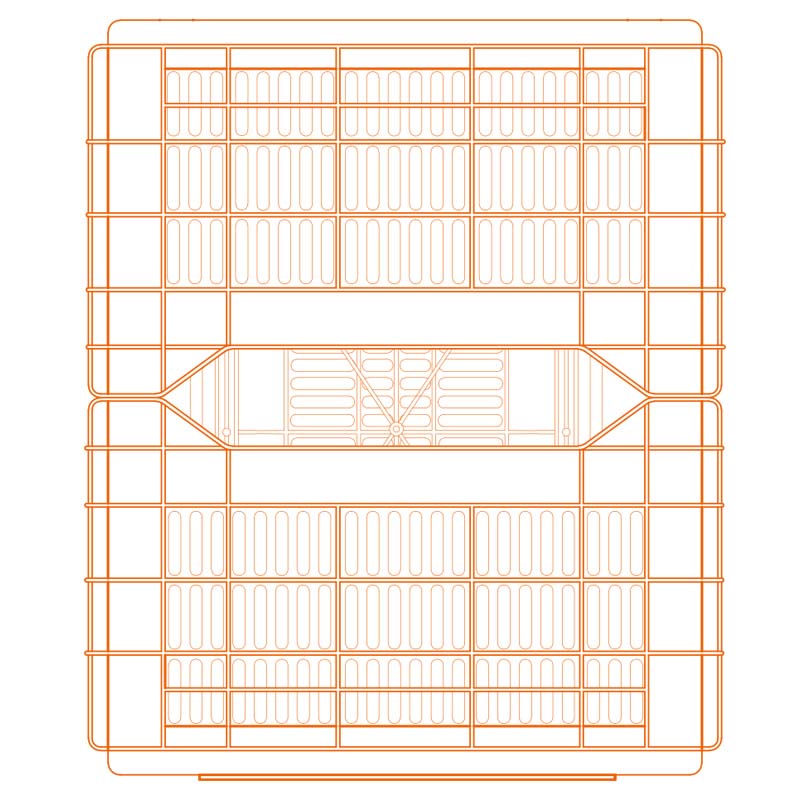

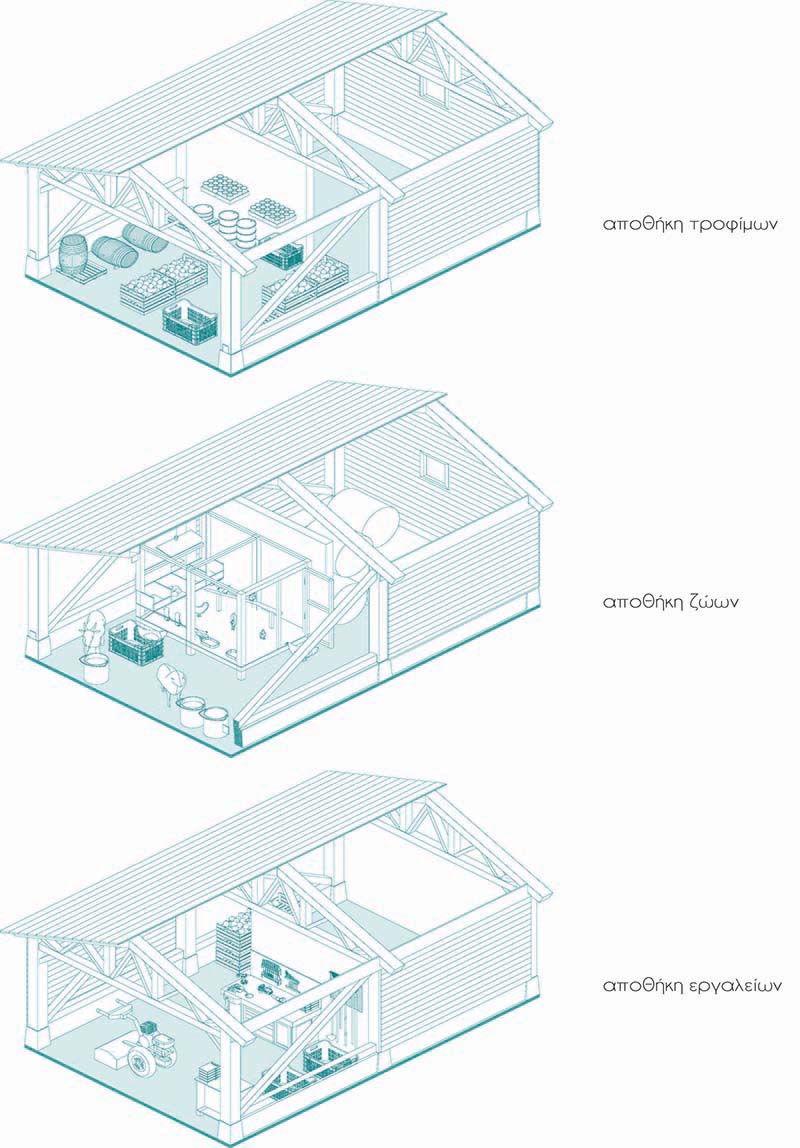



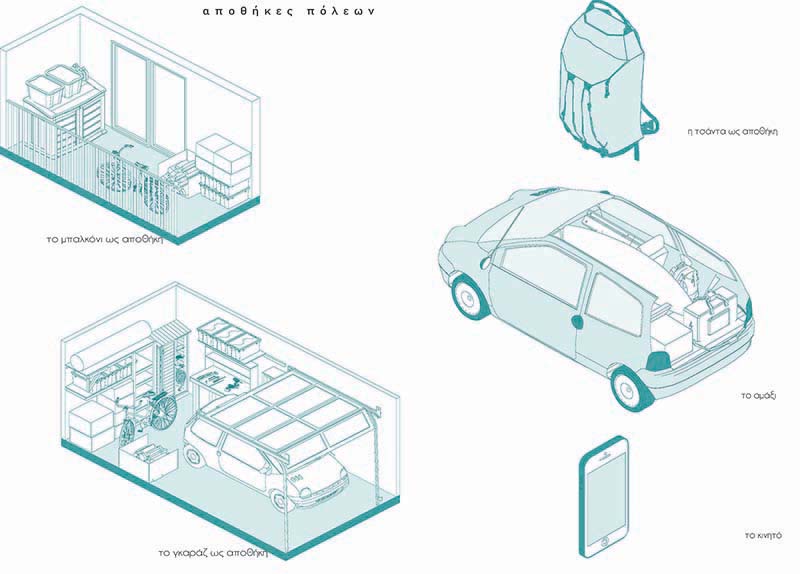

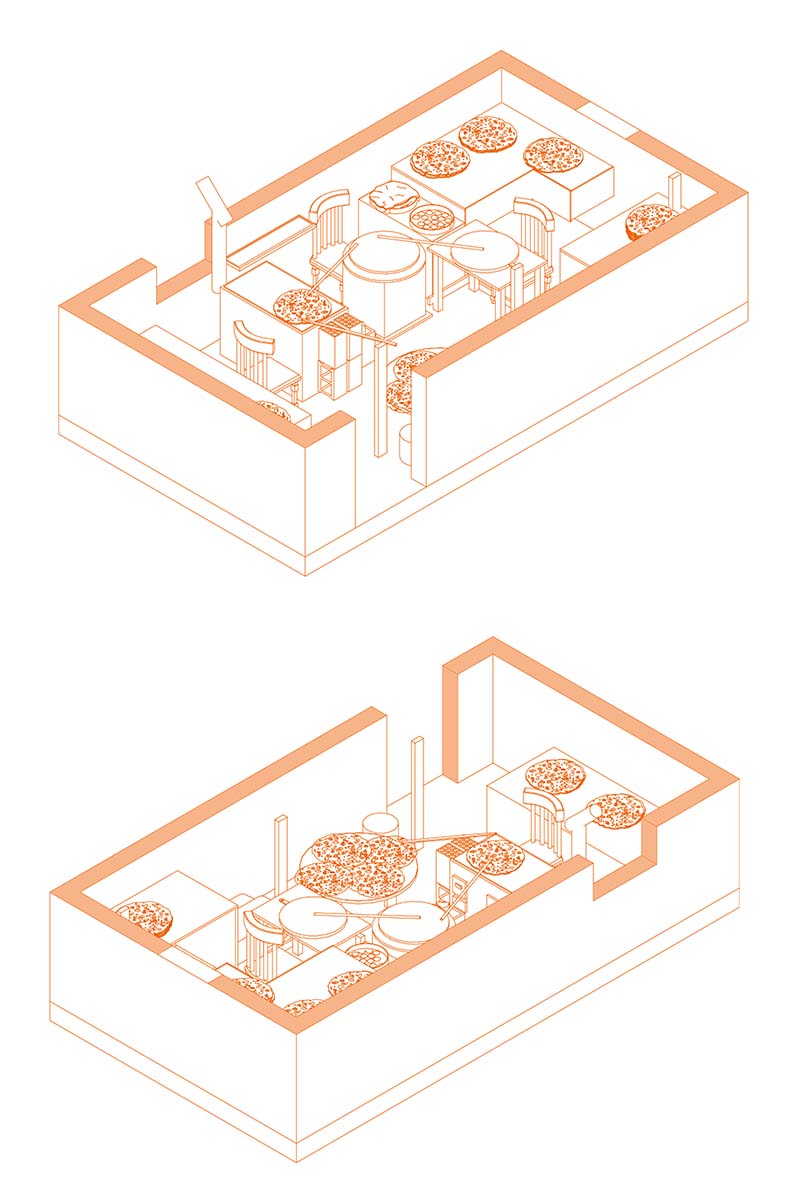

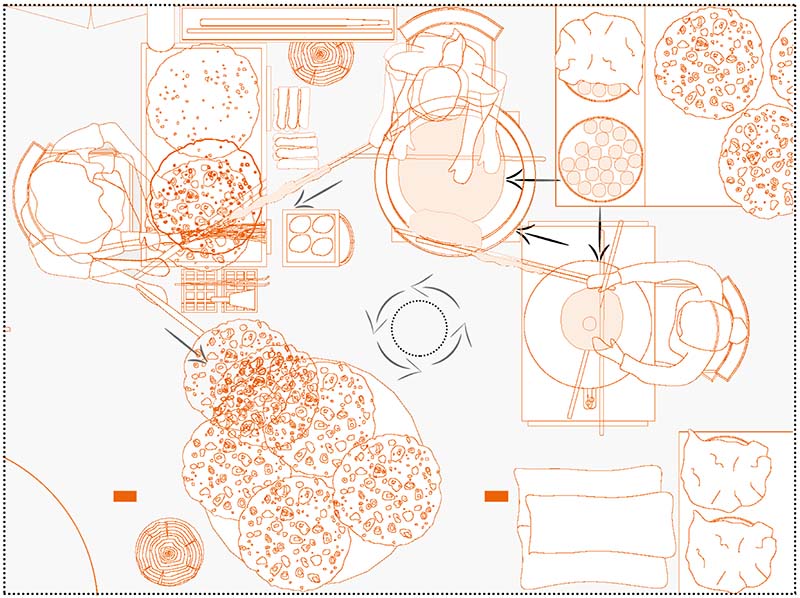

This thesis is a continuation of my research project entitled: "Self-sufficiency practices: a survival manual from Sourpi and Lachanas".
The basic meanings of "self-sufficiency", "storage", and "movement" through an intergenerational memory, which were of interest to me in my research, continue to be key elements of the thesis. Moreover, they focus on personal experience and the necessity of sharing goods, practices, and knowledge with others through contemporary lifestyles.
The narrative begins, in chronological order, through extensive observation and research, about the life and daily practices of my relatives in the two villages where I come from. At first as a simple observer and then as an active subject and its relationship with the materials, objects, and environment of those two places. An architectural design is therefore performed based on "experience", "sensory experiences", "feeling", "care" and "performance".
The narrative culminates in the discovery and composition of a construction that on the one hand serves to save and move, and on the other creates the conditions for sharing and interaction.
"To kafasi" finds its own place during the narrative and is the predominant object of synthesis and research.
Supervisor: Giannisi Phoebe
Reference Number: 997
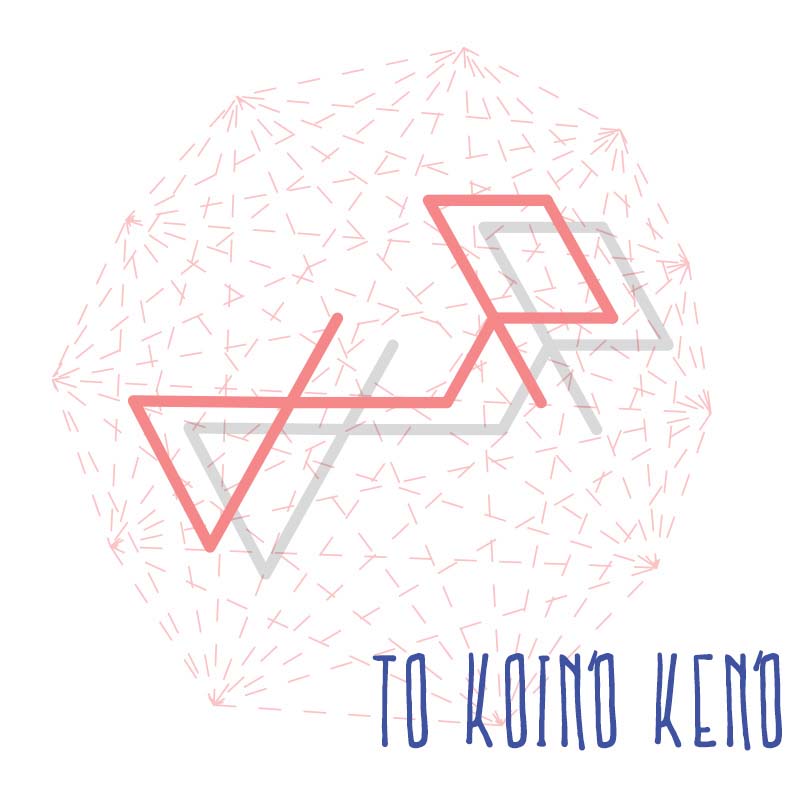

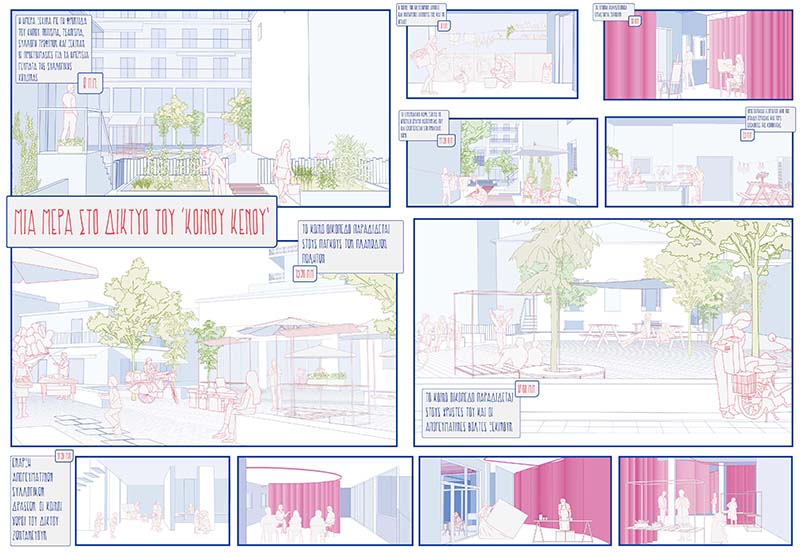

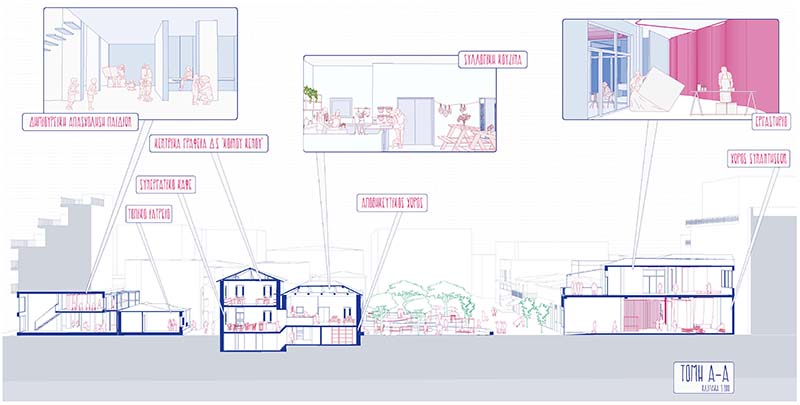



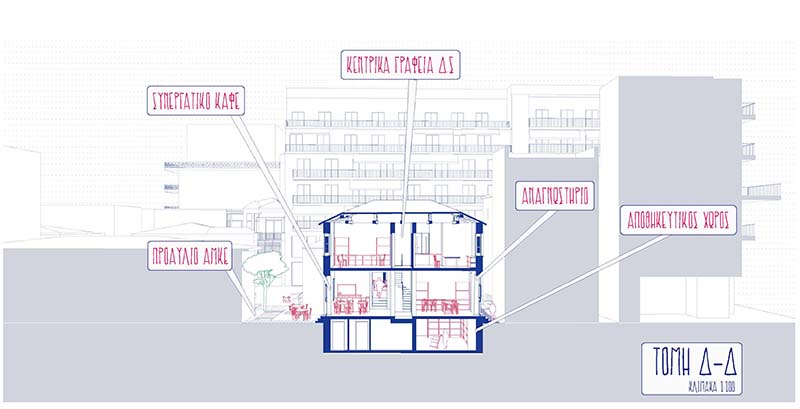

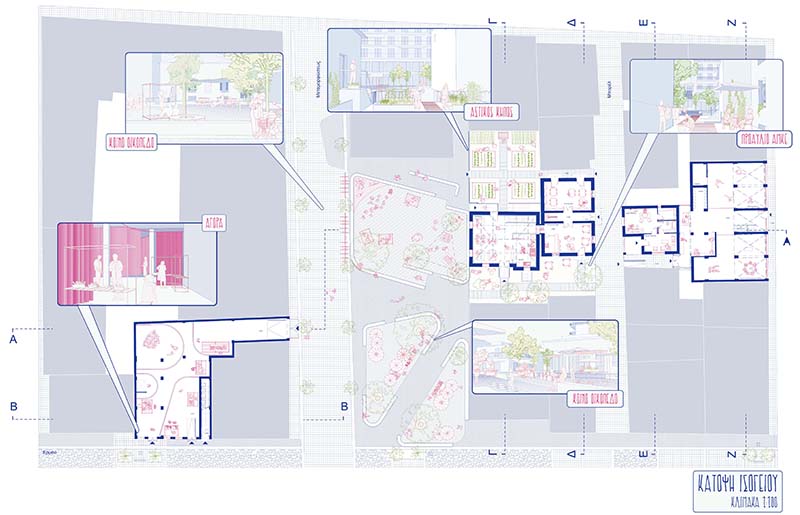

The city has been considered by many researchers and theorists as a living organism that is constantly changing and evolving, leaving visible traces over time, both materially and mentally. Similarly, the natural environment mutates according to the needs and desires of its inhabitants, influencing (in)directly the shape of the city. In terms of architecture, the urban environment is a material reflection of the relationships being developed between public and private elements in a spatial, social, economic, political and cultural level. The urban environment consists of a set of urban edges and boundaries, as defined by Gould (2007), in natural sciences, two terms that explain the way the physical world functions.
Those urban edges and boundaries coexist, separate, connect, unite, collide and play a decisive role in the formation of social relations and of the society in general, as they are the basic concepts on which both the public and private spheres are defined. Thus, depending on the dynamics of the edges and the boundaries, the city can be characterized either as an Open System or a Closed System.
Based on the above perceptions of the urban environment, and according to Sendra (2020), the role of the architect is of particular importance, as the way he designs-intervenes in the urban environment directly and indirectly affects the social relations of citizens. He must function as a mediator, that aims to identify, record, translate and spatially express the needs and desires of citizens, both at the scale of the neighborhood and at the scale of the city as well. In a few words, he must respect the edges, the privacy of citizens and at the same time propose boundaries, in terms of creating fields of meeting and interaction of citizens.
The case study of this diploma thesis is the pedestrian street of Ermou, in the city center of Volos in Greece, focusing on its western part which shows signs of abandonment and degradation. The main objective of the thesis is a design proposal which creates ‘places’ of meeting, gathering and interaction of citizens.
For this purpose, the architectural team deemed it necessary to create research tools for a thorough examination of the field of interest. These tools consist of multi-level maps, which were created after on-site analysis, and an extensive photo archive.
The concluding step of the on-site research was the conduction of a questionnaire to create a spherical image of the views, needs and wishes of pedestrians and locals. Thus, the proposal of the neighborhood redesign is based on the results of the research and the wishes of the users.
This diploma thesis concerns the implementation of a pilot program whose main objective is the utilization and activation of the western part of Ermou, through the conversion of selected empty spaces into common ones. According to the design proposal, these spaces are intended for collective use, creating a Network of Common Spaces, which hosts collective actions and refers to the residents of the neighborhood, but also to the citizens of the city. The result is an alternative version of the existing neighborhood and the city in general, as a place of meeting and interaction of its inhabitants and its users.
Supervisor: Micocci Fabiano
Reference Number: 1002
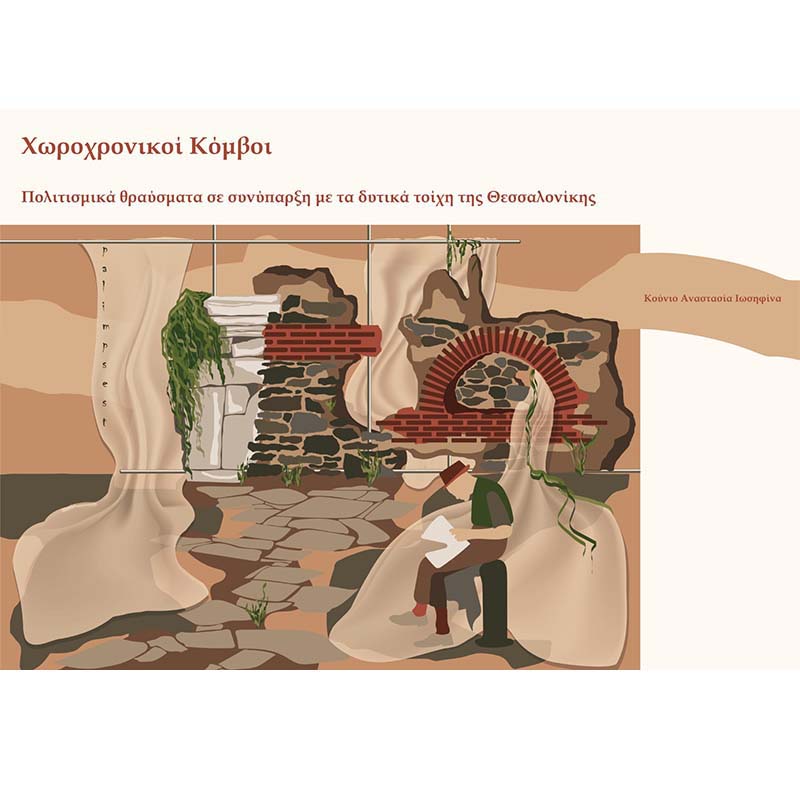

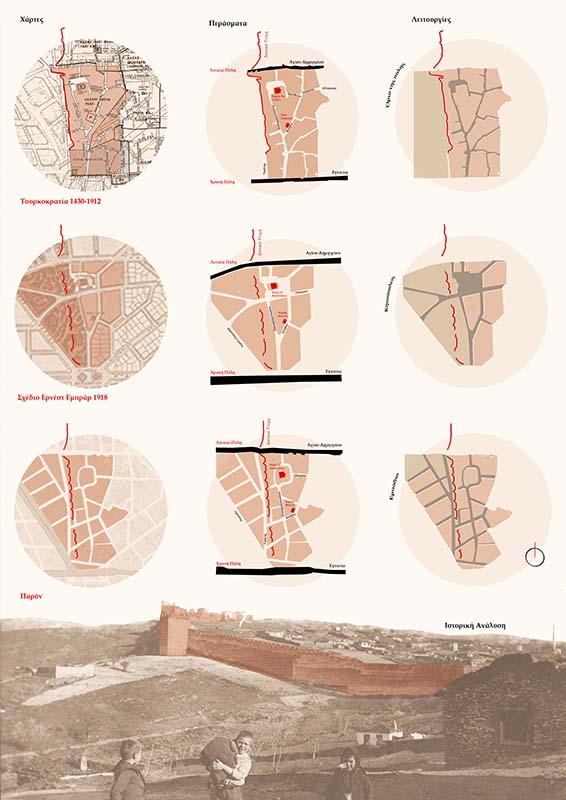

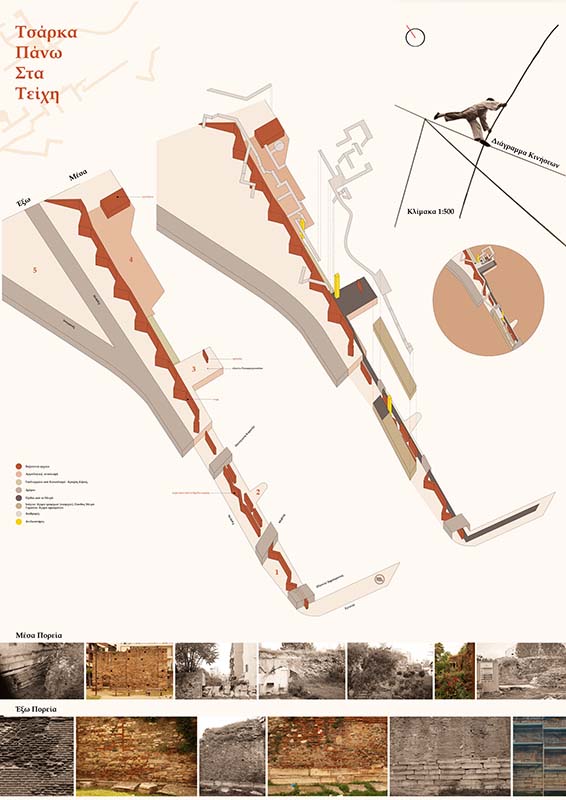

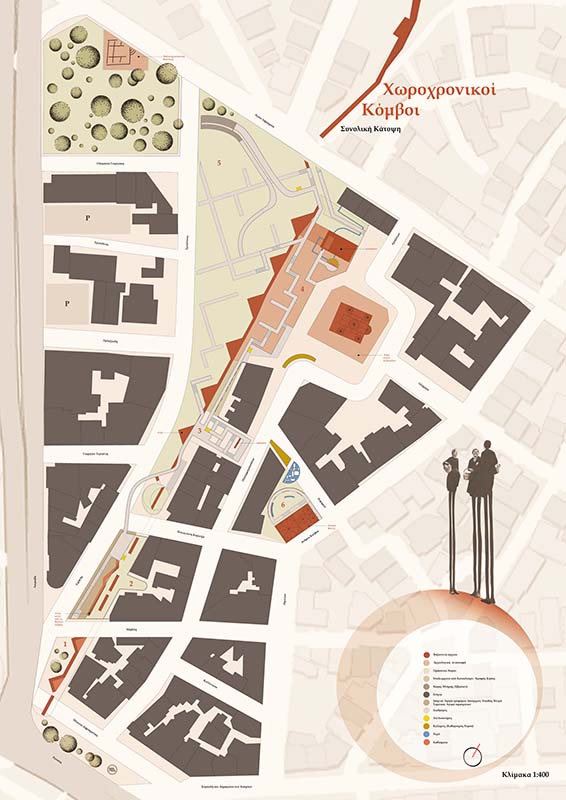

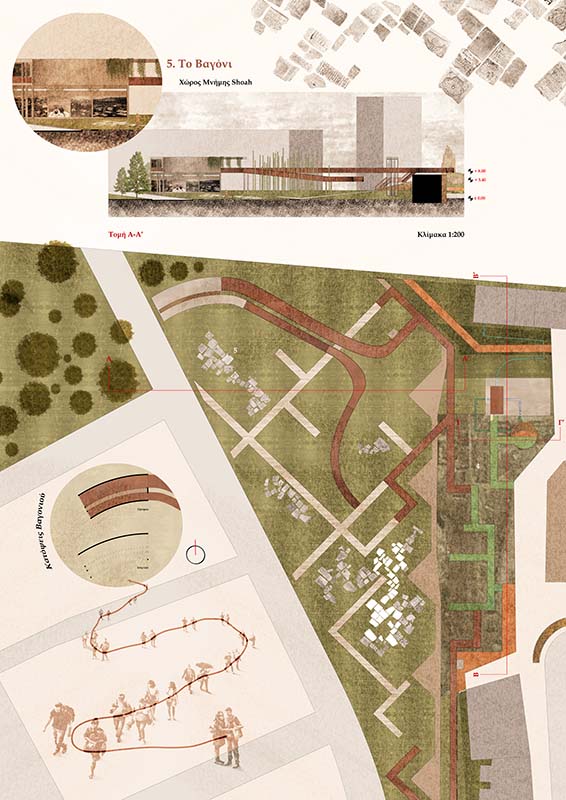

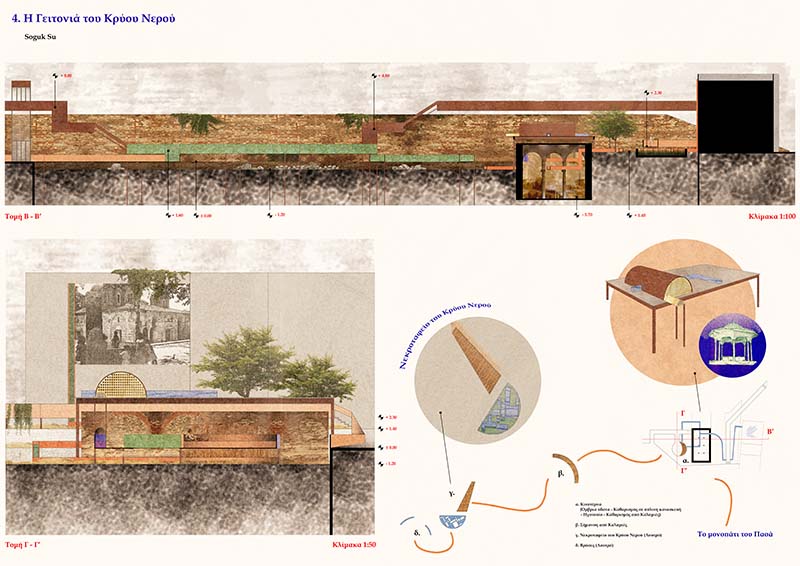

The architectural proposal of the present thesis concerns the utilization and promotion of a part of the walls of Thessaloniki. The purpose was to analyze and then re-conceptualize this prominent boundary of the city as well as the internal (city), external (countryside) space created by it. The area chosen is located at the western edge of the historic center and is defined by two main road axes of the city, those of Egnatia (Golden Gate) and Agios Dimitrios (Lytaia gate).
During the Byzantine period (until 1430) this district included the Church of the Holy Apostles and a cistern which probably was receiving water from the aqueduct that existed outside the walls, southwest, and from the rainwater. During the Ottoman Empire (until 1912) the temple was converted into a mosque with the name Soguk Su Cami'i (Mosque of the cold water) because of the nearby cistern that was watered by the aqueduct now known as Lebet. During this period, a Hammam bath known today as Phoenix, 2 faucets, a fountain and the Cold Water Cemetery were built. Nearby there were also hookah lounges so as for tanners and manufacturers of fur clothing to rest. After the great Thessaloniki fire of 1917, Ernest Ebrard had envisioned this boundary as a garland of garden cities that would encircle the urban center and would be a precursor to the suburbs.
Today the walls meander between private and public space. It's a frontier waiting to find its modern role. Apartment buildings, single-family houses, traces of Roma camps, archaeological excavations are among the elements that exist next to and around it. How could all this multicultural and historical complexity be highlighted in such a way as to create an alternative reading of the city of Thessaloniki free from the extreme Byzantine identity, that will blend harmoniously with the inhabitants of the area?
Supervisors: Giannisi Phoebe, Kouzoupi Aspassia
Reference Number: 992

